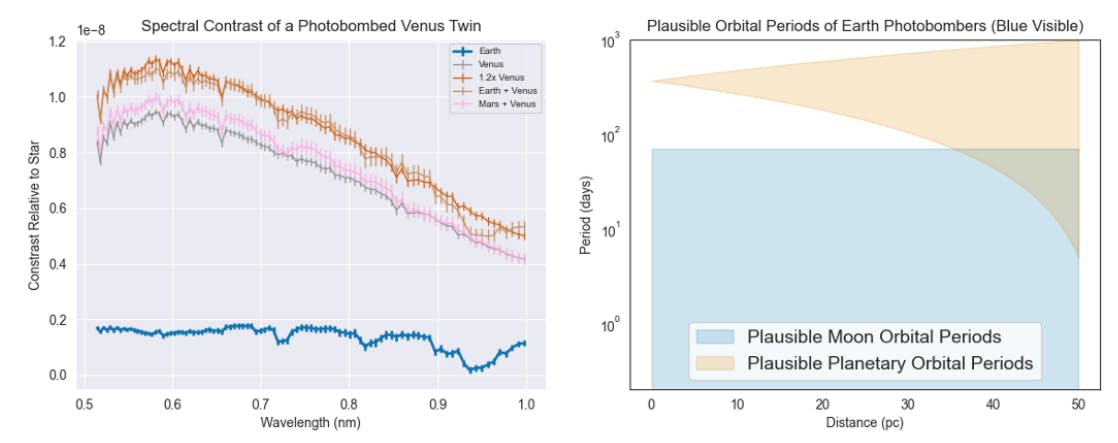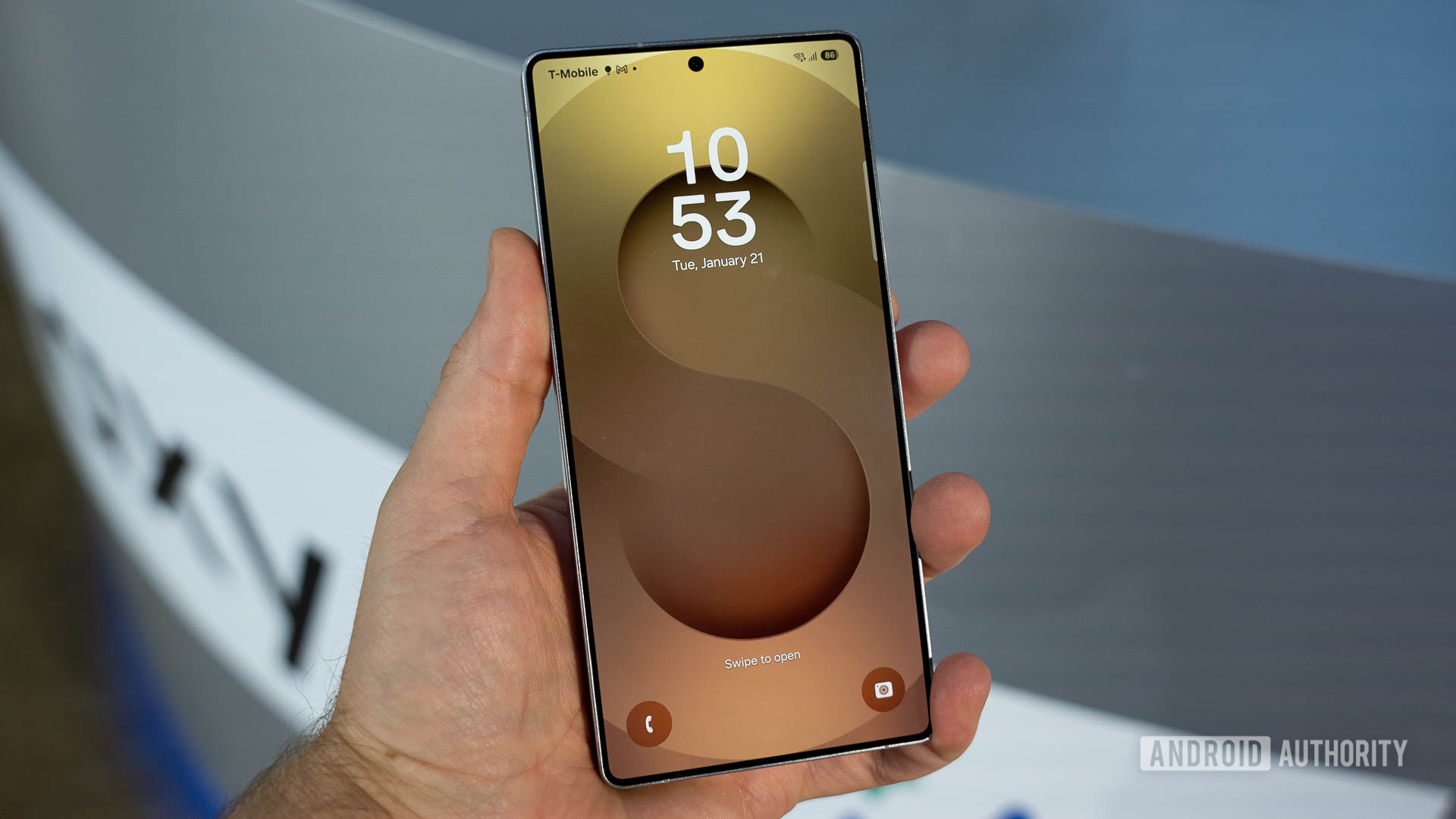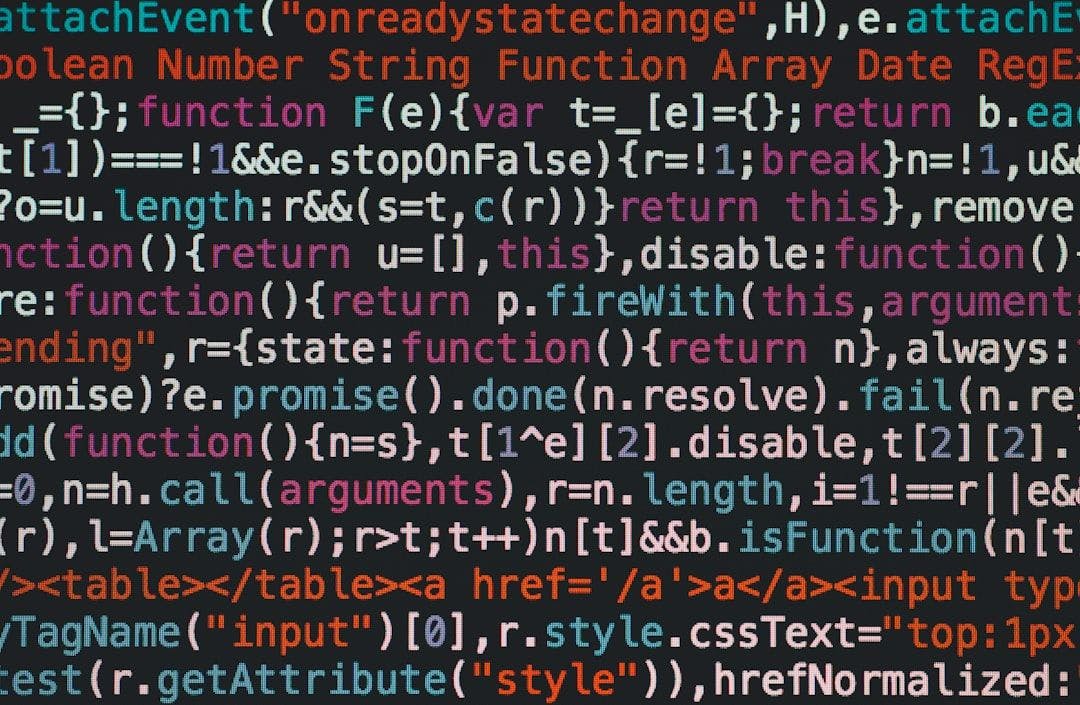Table of Links
Abstract and 1. Introduction
- Diffraction Limit Comparisons for Future Telescopes
- Photobombing in our Solar System
- Consequences for Obtained Spectra
- Mitigation Strategies and Discussion, and References
5. MITIGATION STRATEGIES AND DISCUSSION
The unexpected presence of planets and moons in the PSF of a planet targeted in a search for an Exo-Earth complicates accurate assessment of planetary properties for future efforts. For a 6m telescope such as the Astrophysics Decadal Survey-like flagship telescope, the diffraction-limited PSF of a target may be greater than habitable zone width for systems of interest and our exploration of how our solar system might appear to such a telescope indicates photobombing effects may be a complicated time variable phenomenon. Contamination of target planets’ obtained spectra by other bodies can induce significant changes in flux levels and noise that produce muted or erroneous spectral signatures. This is more complicated when time varying variations due to variations in both target planet and photobombing bodies are considered (e.g. spatial variations, weather, megastructures, etc). Such photobombing effects may also hide existence of interesting, potentially habitable planets. The left panel of figure 4 shows simulated spectra for a Venus Twin of different sizes that is photobombed by additional planets. Note that with possible exception of the water band, it is difficult to tell apart a 1.2RV enus Venus-like planet and a blended Venus and Earth spectra. Both scenarios indicate the ability to extricate potential additional bodies from a target planets’ PSF should be incorporated into planning for targeting of Exo-Earths, since the presence of multiple small planets around such worlds, while uncertain, may be a possibility (Zink et al. 2019; Kunimoto & Matthews 2020). Mitigation strategies may be considered through both observatory design considerations and other methods.
Observatory Design Based Mitigation Strategies: One way of obviating photobombing concerns is increased mirror size – figure 2 and table 1 show the improvement a 12m telescope offers. However, increasing mirror size comes with concerns regarding practical trades/programmatic concerns, which future work should explore. Image plane Nyquist sampling for future detectors on such telescopes may need to be modified to ensure such issues are tractable for certain standard systems at pre-determined distances to ensure a sufficient sample of systems where photobombers can be identified. Other Mitigation Strategies: Detector image plane sampling would be important for mitigation using relative fluxes of photobombers and their location versus PSF peak and dropoff in PSF intensity – this was ignored for this initial exploratory work, but should be studied. Additional mitigation techniques may apply
to certain observing scenarios, such as occurrence of serendipitious mutual occultations (Cabrera & Schneider 2007) or use of spectroastrometry (Agol et al. 2015) (using multiple telescopes with different mirror sizes/spectral ranges). Multi-epoch observations supported by theoretical exploration of likely signatures may help address such scenarios. The right panel of figure 4 shows plausible moon orbital periods around an Earth-twin by calculating Roche Limit and 1/3 * Hill Sphere bounded Keplerian periods and plausible orbital periods of a photobombing planet contained within a distance-to-system dependent blue-visible (450nm) diffraction limit to produce zones where time variable signatures may be due to a photobomber. System specific modeling can incorporate such limits to determine optimal sampling of multi-epoch observations. Many strategies/techniques might be tested using the Nancy Grace Roman Telescope’s Coronagraph Instrument (Bailey et al. 2019) in a different phase space, to help reduce photobombing risk for future telescopes or suggest mirror size is the critical means of addressing the issue. Finally, supplementary and synergistic high resolution spectroscopy (Snellen et al. 2015) or interferometry (Gravity Collaboration et al. 2019) observations may help address photobombing observations before additional potentially diagnostic missions arrive (Quanz et al. 2021; Turyshev & Toth 2022).
Acknowledgements: We thank Thomas Fauchez, Avi Mandell, Shawn Domagal-Goldman and Daya Saxena for their helpful conversations that improved the quality of this manuscript. We’d also like to thank the reviewer, whose suggestions improved the quality of this paper. This work was supported by NASA under award number 80GSFC21M0002 and was also funded in part by the GSFC Sellers Exoplanet Environments Collaboration (SEEC).
REFERENCES
Agol, E., Jansen, T., Lacy, B., Robinson, T. D., & Meadows, V. 2015, ApJ, 812, 5, doi: 10.1088/0004-637X/812/1/5
Bailey, V. P., Armus, L., Balasubramanian, B., et al. 2019, arXiv e-prints, arXiv:1901.04050. https://arxiv.org/abs/1901.04050
Barnes, J. W., & O’Brien, D. P. 2002, ApJ, 575, 1087, doi: 10.1086/341477
Cabrera, J., & Schneider, J. 2007, A&A, 464, 1133, doi: 10.1051/0004-6361:20066111
Catling, D. C., Krissansen-Totton, J., Kiang, N. Y., et al. 2018, Astrobiology, 18, 709, doi: 10.1089/ast.2017.1737
Checlair, J. H., Villanueva, G. L., Hayworth, B. P. C., et al. 2021, AJ, 161, 150, doi: 10.3847/1538-3881/abdb36
Gaudi, B. S., Seager, S., Mennesson, B., et al. 2020, arXiv e-prints, arXiv:2001.06683. https://arxiv.org/abs/2001.06683
Giardino, G., Birkmann, S., Robberto, M., et al. 2019, Publications of the Astronomical Society of the Pacific, 131, 1. https://www.jstor.org/stable/26874443
Gravity Collaboration, Lacour, S., Nowak, M., et al. 2019, A&A, 623, L11, doi: 10.1051/0004-6361/201935253
Green, J., Hoehler, T., Neveu, M., et al. 2021, Nature, 598, 575, doi: 10.1038/s41586-021-03804-9
Hamilton, D. P., & Burns, J. A. 1992, Icarus, 96, 43, doi: 10.1016/0019-1035(92)90005-R
Kopparapu, R. K., Ramirez, R., Kasting, J. F., et al. 2013, ApJ, 765, 131, doi: 10.1088/0004-637X/765/2/131
Kunimoto, M., & Matthews, J. M. 2020, AJ, 159, 248, doi: 10.3847/1538-3881/ab88b0
National Academies of Sciences, E., & Medicine. 2021, Pathways to Discovery in Astronomy and Astrophysics for the 2020s (Washington, DC: The National Academies Press), doi: 10.17226/26141
Poberezhskiy, I., Luchik, T., Zhao, F., et al. 2021, in Space Telescopes and Instrumentation 2020: Optical, Infrared, and Millimeter Wave, ed. M. Lystrup, M. D. Perrin, N. Batalha, N. Siegler, & E. C. Tong, Vol. 11443, International Society for Optics and Photonics (SPIE), 314 – 335, doi: 10.1117/12.2563480
Quanz, S. P., Ottiger, M., Fontanet, E., et al. 2021, arXiv e-prints, arXiv:2101.07500. https://arxiv.org/abs/2101.07500
Rein, H., Fujii, Y., & Spiegel, D. S. 2014, Proceedings of the National Academy of Science, 111, 6871, doi: 10.1073/pnas.1401816111
Rhodes, B. 2019, Skyfield: High precision research-grade positions for planets and Earth satellites generator, Astrophysics Source Code Library, record ascl:1907.024. http://ascl.net/1907.024
Robinson, T. D. 2011, ApJ, 741, 51, doi: 10.1088/0004-637X/741/1/51
Saxena, P., Villanueva, G. L., Zimmerman, N. T., Mandell, A. M., & Smith, A. J. R. W. 2021, AJ, 162, 30, doi: 10.3847/1538-3881/abf657
Snellen, I., de Kok, R., Birkby, J. L., et al. 2015, A&A, 576, A59, doi: 10.1051/0004-6361/201425018
Stark, C. C., Roberge, A., Mandell, A., & Robinson, T. D. 2014, ApJ, 795, 122, doi: 10.1088/0004-637X/795/2/122
Stark, C. C., Belikov, R., Bolcar, M. R., et al. 2019, Journal of Astronomical Telescopes, Instruments, and Systems, 5, 024009, doi: 10.1117/1.JATIS.5.2.024009
The LUVOIR Team. 2019, arXiv e-prints, arXiv:1912.06219. https://arxiv.org/abs/1912.06219
Traub, W. A., & Oppenheimer, B. R. 2010, in Exoplanets, ed. S. Seager, 111–156
Turyshev, S. G., & Toth, V. T. 2022, arXiv e-prints, arXiv:2204.04866. https://arxiv.org/abs/2204.04866
Villanueva, G. L., Smith, M. D., Protopapa, S., Faggi, S., & Mandell, A. M. 2018, JQSRT, 217, 86, doi: 10.1016/j.jqsrt.2018.05.023
Zink, J. K., Christiansen, J. L., & Hansen, B. M. S. 2019, MNRAS, 483, 4479, doi: 10.1093/mnras/sty3463
Author:
(1) Prabal Saxena, CRESST II/University of Maryland, College Park, Maryland 20742, USA and NASA Goddard Space Flight Center, Greenbelt, Maryland 20771, USA ([email protected]).











